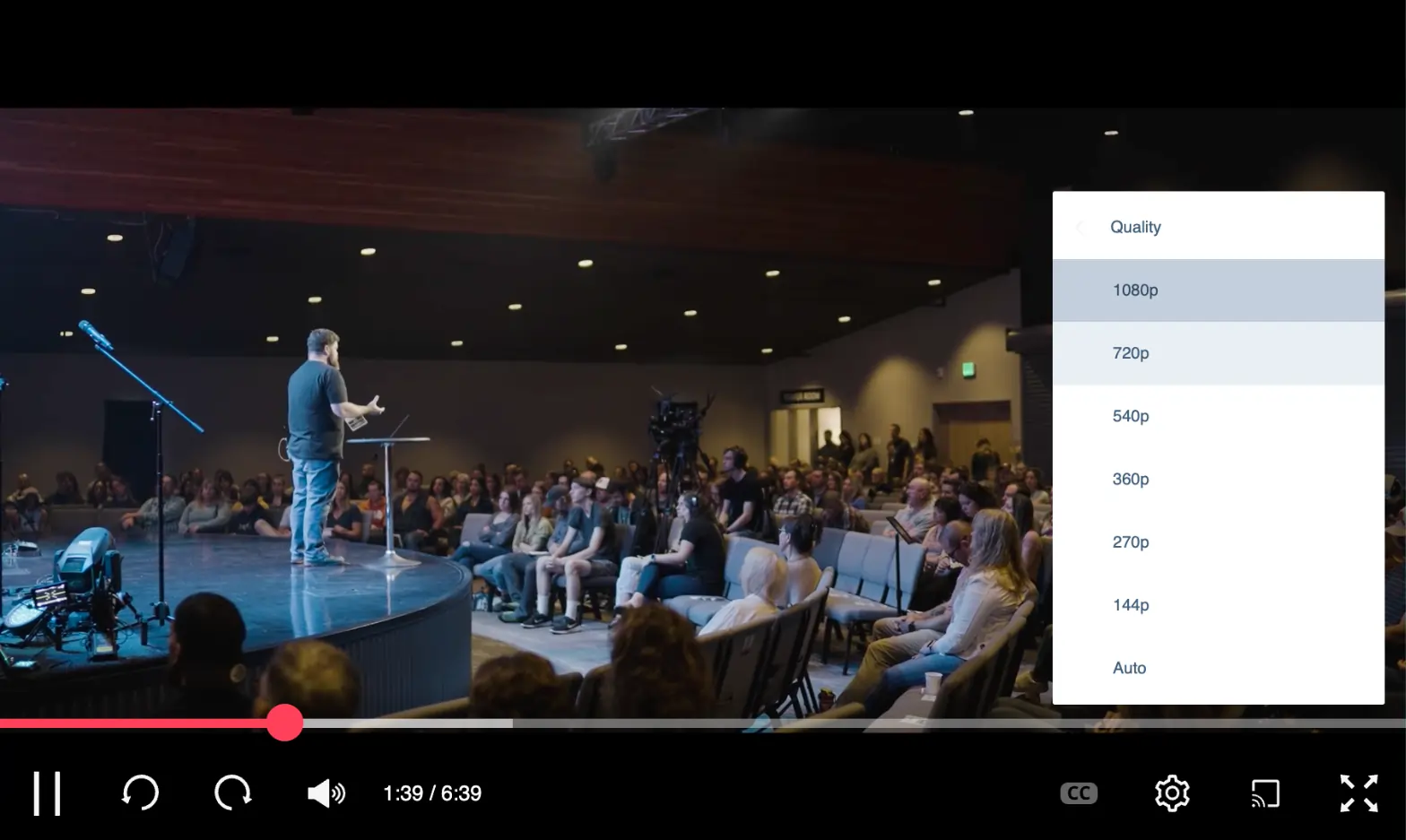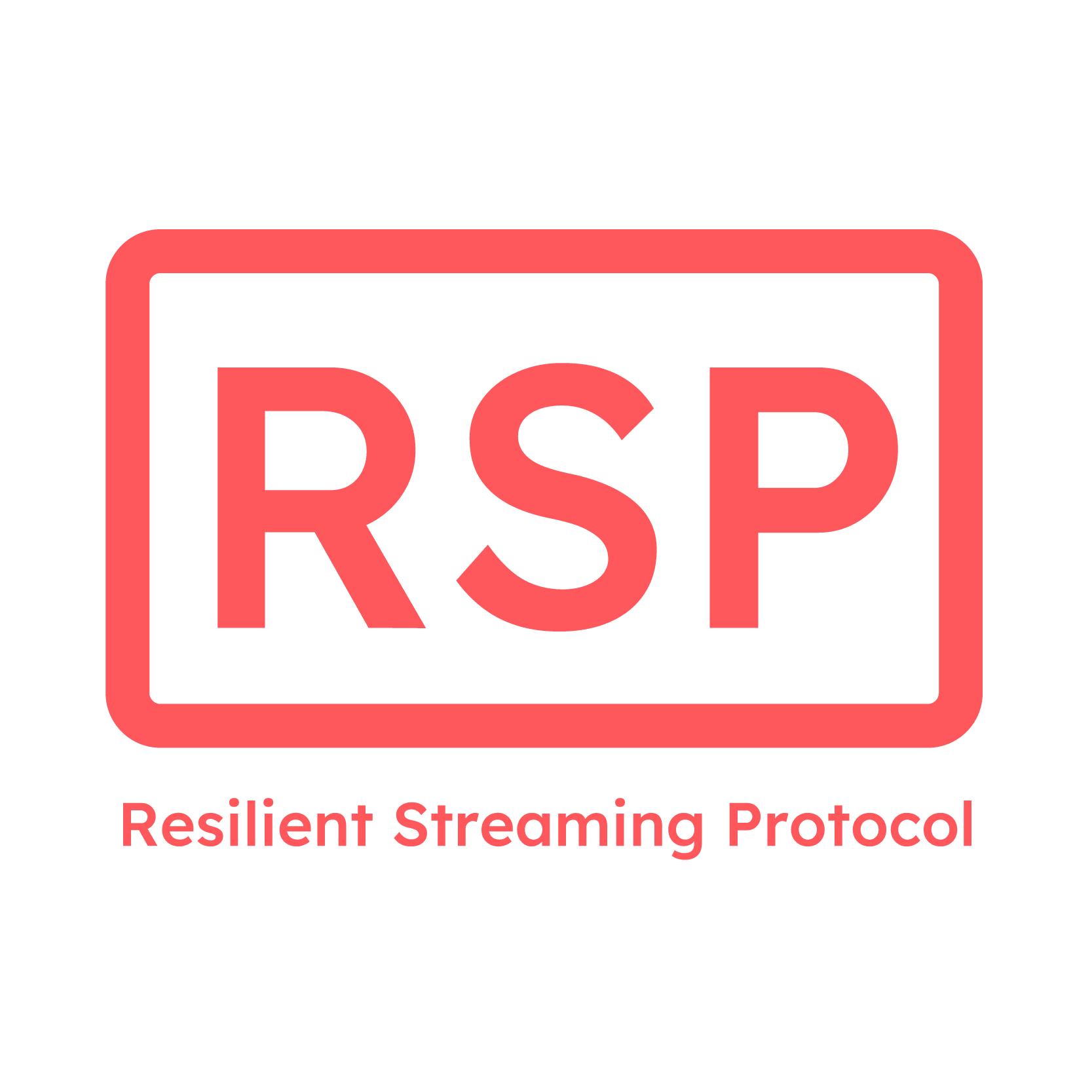Resilient Streaming Protocol
Resi’s patented Resilient Streaming Protocol (RSP) ensures your live streams are flawless — even when the internet isn’t.

Unmatched Reliability
Never lose a moment, no matter the network conditions.Error-Free Delivery
Exceptional audio and video without distracting buffering or pixelation.Instant Recovery
Connectivity drops? Your stream resumes without missing a beat.Built for Your Peace of Mind
Focus on your message, not the tech. RSP tackles the common frustrations of livestreaming, so you can deliver your content with confidence.
- Adaptive Bitrate: Maintain high-quality streams under any network conditions
- Selective Retransmission: Only retransmits corrupted data, ensuring bit-correct live streams.
- Multi-WAN Support: Leverage multiple internet connections for added reliability

Simple and Flexible Setup
Effortless integration. Designed for ease of use, RSP allows you to get started quickly without complicated configurations.
- Smart Routing: RSP ensures efficient content delivery by rerouting bad ISP routes, like a GPS for streaming.
- Network Flexibility: Seamlessly switch networks without interrupting your stream.
- Uncompromised Quality: We maintain video quality even during bandwidth fluctuations, ensuring a consistent viewing experience.
CUSTOMER STORY
Live Streaming from Rural Alaska
Even in one of the most isolated corners of the world, Resi helps Alliance Christian Fellowship Church streamline their operations and broadcast confidently.
Increased Viewership
Longer Watch Times
Less Streaming Complaints


Error-Proof Streaming
RSP ensures multi-bitrate video creation from a flawless audio/video source, preventing data loss during transmission for a seamless viewing experience.

Gapless Viewing Experience
With RSP, the cloud transcoder pauses during network loss, then seamlessly resumes transcoding once restored, ensuring uninterrupted live broadcast.

Reliable Network Adaptability
RSP enables broadcasters to stream from any network seamlessly by switching networks mid-stream and using standard internet ports for easy setup, without worrying about connectivity, bandwidth, or firewalls.
How RSP Compares to Other Streaming Protocols
Choosing the right streaming protocol can mean the difference between a flawless broadcast that keeps viewers engaged and one that keeps them away with poor quality and constant interruptions. Here’s how RSP stacks up against the competition.
| RSP | SRT | Boxcast Flow | RTMP | |
|---|---|---|---|---|
| Maximum Buffer Time | 10 min. | 8 sec. | 90 sec. | 0 sec. |
| Flawless Recording in Cloud | ✔ | ✘ | ✘ | ✘ |
| Flawless Recording in YouTube | ✔ | ✘ | ✘ | ✘ |
| Protects Against Network Disruptions | Broadcast and Viewer | Broadcast | Broadcast | Broadcast |
| Supports Hybrid Cloud | ✔ | ✘ | ✘ | ✘ |
| Maximum Resolution |
up to 4K stream, up to 4K multisite |
up to 4K stream up to 4K multisite (depends on destination hardware) |
up to 1080p stream up to 1080p multisite |
up to 4K stream up to 4K multisite |
| Maximum Video Channels | 2 | 1 | 1 | 1 |
| Maximum Audio Channels | 16 | 8 | 2 | 2 |
| Broadcast Hardware Requirements | A PC or Mac with ProPresenter or Resi Encoder | Compatible PC or Hardware Encoder | BoxCaster, Spark, Pro, or Broadcaster app | Compatible Hardware or Software Encoder |
| Redundant & Lossless Cloud Failover | ✔ | ✘ | Unknown | ✘ |
Start Streaming Now
See firsthand how Resi transforms your live streaming experience with a full walkthrough of Resi’s advanced features. Find answers to your questions, get pricing info, and discover how to elevate your streaming setup with ease.
Still have questions? We have answers.
The Resilient Streaming Protocol (RSP) is a patented live streaming technology developed by Resi that delivers complete and error-free audio and video, even when network interruptions occur. It is designed for applications where maintaining first-rate media quality is vital, regardless of transmission challenges.
A high maximum buffer time helps prevent stream interruptions by storing more data in advance, allowing smooth playback even during network fluctuations. While it slightly increases latency, it’s especially valuable for high-quality, mission-critical streams where stability is more important than real-time delivery.
RSP uses selective retransmission and data verification to confirm that all data reaches its destination without errors. If a network outage occurs, the RSP cloud transcoder pauses and waits for the connection to be restored. Once reconnected, the encoder transmits any missing data, allowing playback to resume without loss, so viewers experience smooth, high-quality streams.
Unlike RTMP, RSP is equipped with built-in error correction, ensuring a far more reliable stream even under suboptimal network conditions. When transmission issues occur, RSP enables the encoder to recover lost data and resend it to the cloud. This process ensures a seamless, uninterrupted viewing experience for your audience.
If the connection drops during a live stream, the RSP encoder temporarily stores the audio and video data. Once the connection is restored, the encoder transmits the stored data to the RSP cloud transcoder, which resumes processing from where it left off. This method prevents interruptions and missing content for viewers.
Yes, RSP is designed to function across different network conditions, including those with strict firewalls or bandwidth constraints. Its architecture allows it to work around network challenges, providing reliable streaming even in difficult environments.
RSP makes certain that multi-bitrate videos are generated from a complete and error-free source, allowing adaptive bitrate streaming without quality loss. Additionally, the recorded content can be seamlessly and effortlessly uploaded, stored, and shared via Resi On Demand as soon as the live stream is completed — saving your post-production team hours every week.
Live streaming requires an encoder. An encoder is a piece of hardware or software that converts incoming video signals into a digital format suitable for streaming on the internet. Video cameras—whether on your smartphone or a separate piece of hardware—take in a lot of information, and all of that information can bog down the quality and speed of your live stream (think of traffic on a particularly busy freeway during rush hour). Encoders remedy this situation by compressing the audio and video data so that it’s easy to transmit over the internet while maintaining a high level of quality. Resi’s encoders — like the beginner-friendly Mini and our server-grade collection — are custom built with RSP.
Absolutely. RSP’s ability to provide uninterrupted, error-free streaming makes it an excellent choice for mission-critical live events where high-quality broadcast is essential, even under challenging network conditions.



